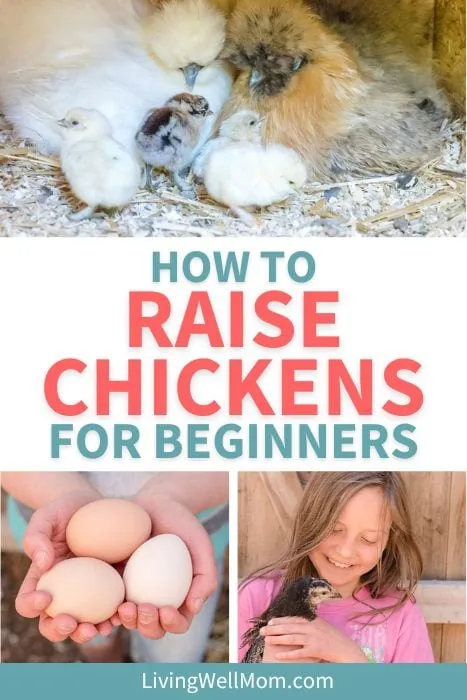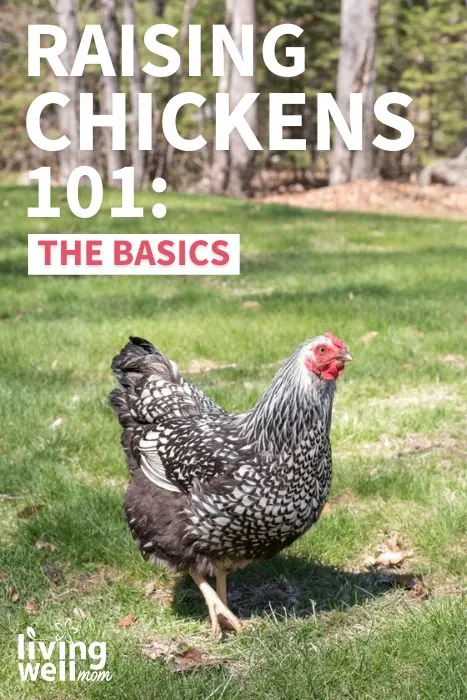There are some basic things to know before jumping into raising chickens with both feet. Whether you want backyard chickens for eggs or enjoyment, this guide will get you started on the right foot.
Fresh eggs. Fewer bugs. Feathered friends that follow you around the yard. An interesting project for the whole family. You’ve probably heard a lot of positive reasons for raising chickens lately, and you might be considering it yourself.
But, there are a few things you should know before jumping into the world of chickens. (Because once you do, there’s no going back!)
And speaking as an experienced “new” chicken flock grower (and self-professed “chicken lady,”) I had to learn quite a few things the hard way. I thought you all could learn from my mistakes!
Here’s your basic guide for newbies to raising backyard chickens!
Are chickens allowed where you live?
First, you need to know whether you’re even allowed to own chickens in your yard. Some municipalities allow it, while others don’t. (Oh, the horror!)
Be sure to check your town or city’s local ordinances. For example, some places may allow chickens but only a limited number of hens with no roosters. Or you may have to apply for a permit.
Hopefully, there won’t be restrictions, but it’s better to be safe than sorry and know all the rules on the front end. It would be heartbreaking if you ended up with a rooster your child claimed as their pet, only to be forced to get rid of him!
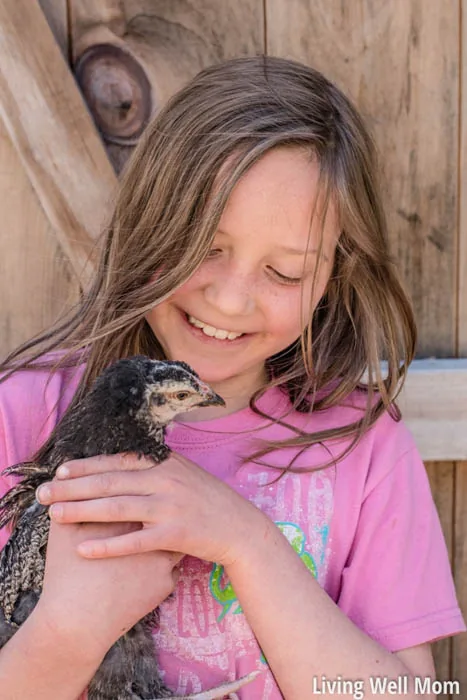
Raising chickens 101
Ok, if you’ve checked your town’s regulations and know you can have backyard chickens. Here are a few things you need to consider!
Choosing chicken breeds
There are dozens (maybe even hundreds) of chicken breeds, but they all fall into one of these four categories:
- Egg Laying Breeds: These hens have short production lifetimes but produce large quantities of eggs. Rhode Island Red chickens are good egg producers.
- Heritage Breeds: A Heritage chicken (according to the Livestock Conservancy) is a breed established prior to the mid-20th century. It’s naturally mated, slow growing, and has a productive outdoor life.
- Meat Breeds: These breeds of chicken grow very quickly for meat purposes.
- Dual Purpose Breeds: These hens are both good egg layers and good meat chickens.
Buying your chickens
You can buy chickens in one of four stages:
- Hatching eggs
- Chicks
- Pullets
- Adult chickens
We started with chicks, and I highly recommend going that route. Hatching eggs was more than we wanted to take on, and chicks are much more affordable than pullets or adult chickens. Plus, you get to bond with the chicks – and they bond with you too!
If you get chicks, you’ll need a chick brooder plus some chick-specific supplies such as a heat lamp, a feeder, and a water bowl small enough for them to use.
Check out how to make a chick brooder to learn more and meet some of our chicks too!
Housing for raising chickens
Housing doesn’t have to be complicated when you’re raising chickens, but there are two important things you should keep in mind:
1. The chicken coop needs to be safe from predators
There are a lot of wild animals that would love to get a taste of chicken, and most of them won’t stop at a little chicken wire.
Chicken wire does not protect chickens. Snakes can slide through. Hawks and other animals (like raccoons and coyotes) won’t hesitate to rip it apart. And foxes can find their way in too.
Hardware cloth is a much safer fencing option.
There are fisher cats (similar to weasels) around our house, and they can squeeze through tiny 2″ spaces! We’ve made sure to cover any openings, like the eves, with hardware cloth for protection.
We also make sure to cover opened windows with hardware cloth since regular screens don’t offer enough protection.
You can see the hardware cloth here on our latest chicken coop – a used shed we just picked up and are outfitting as our new bantam coop (for little chickens)!

2. Be sure to provide enough space for raising chickens
The general rule of thumb is 4 square feet of floor space in the coop per bird, though some chicken owners do 2 square feet for each bird in their backyard flock without a problem.
You’ll need to take your whole setup into account. If you plan to let your birds free range most days with only nights locked in the coop, you can probably get away with a slightly smaller floor plan per bird.
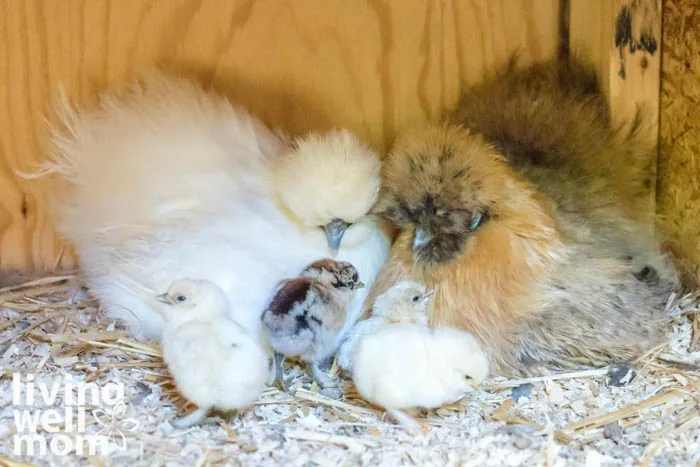
Keep in mind that crowded birds will peck each other, are more prone to stress and illness, and you’ll generally have more issues.
If in doubt, always go bigger. There’s chicken math to be reckoned with, so you WILL want more room for later. (I speak from experience.)
You’ll also need to consider your chicken run, which is an open, covered area for your chickens. The rule of thumb for this is 10 square feet per bird. Again though, if your birds are free range, you could get away with a little less space.
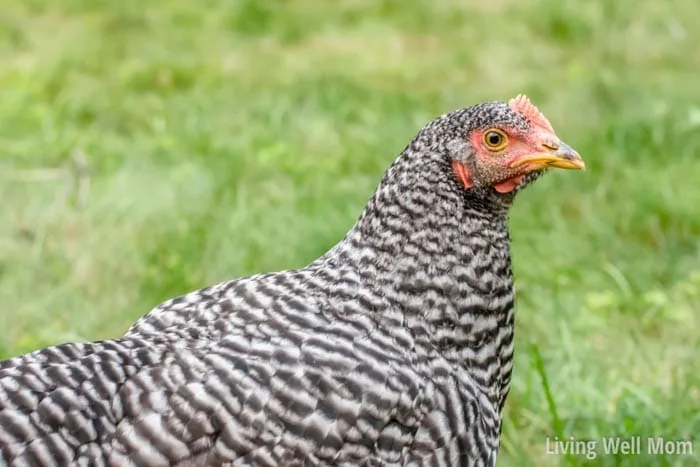
We’re in the process of making our chicken run larger (they free range all day, every day, so it hasn’t been a huge priority until now) and will cover it with bird netting to keep them in and keep the owls out.
Our run isn’t 100% predator-proof, but it does protect against a stray dog or wild animal running through if we’re not around during the day. Because it’s not completely predator-proof, we always make sure to lock the birds in our as-safe-as-possible chicken coop at night.

Food and water for raising chickens
Fresh water is essential for raising happy, healthy chickens, just like it is for us!
Are you prepared to go out in the freezing cold winter and replace their frozen water with fresh water? It’s just as important in the hot summer months when a lack of water (even for just a few hours) can cause a hen to stop laying eggs!
Ensure you provide enough clean, fresh water for the number of birds in your flock.
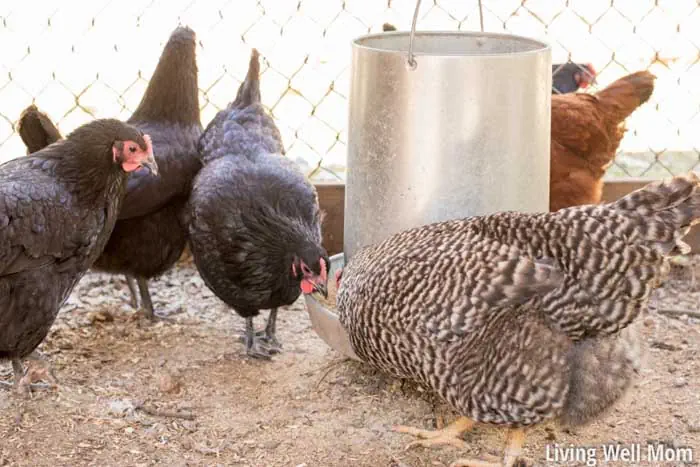
For chicken food, it’s important to choose a quality brand you can trust. You should pay attention to the ingredients, especially if you have egg layers, because that food will end up in the egg production.
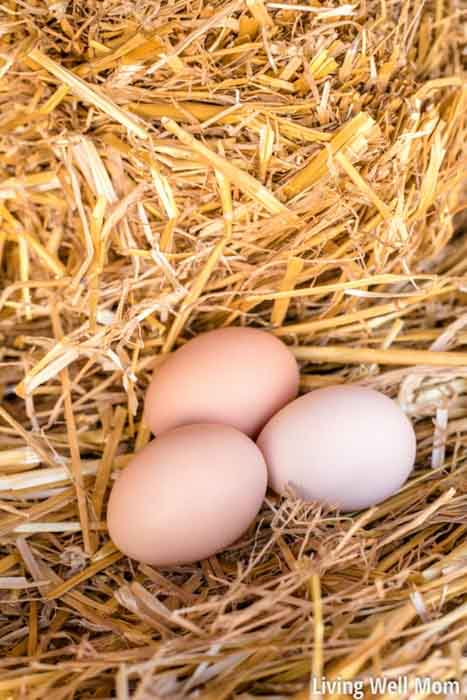
That’s why I use organic chicken feed, like Purina® Organic Poultry Feed, for my chickens. Their feed contains “good stuff” I want my chickens to eat to promote good digestion. And it doesn’t have any of the ingredients I don’t want, like animal by-products, fillers, artificial preservatives, or growth hormones.
While no chicken feed brands contain growth hormones, some do contain the other “junk” stuff.
Chickens have different nutrient requirements depending on their age and if they lay eggs. Because of this, there are two main categories of chicken feed:
- Chick feed – Purina® Organic Starter-GrowerPoultry Feed – for chickens, ducks, and geese from hatch to laying age (18-20 weeks)
- Layer feed – Purina® Organic LayerPoultry Feed (in pellets or crumbles) – for laying hens
There’s also Purina® Organic Scratch Grains Poultry Feed, which is a supplement aka “treat” for chickens over 18 weeks. NOTE: Because it’s not to meant to be a primary source of nutrition, Purina recommends that scratch grains shouldn’t make up more than 10% of the daily diet.
Our girls dig right in and gobble it down every mealtime. They love to eat it out of our hands like a treat too! And I love that it’s organic and helps support a healthy immune system and strong, nutritious eggs!
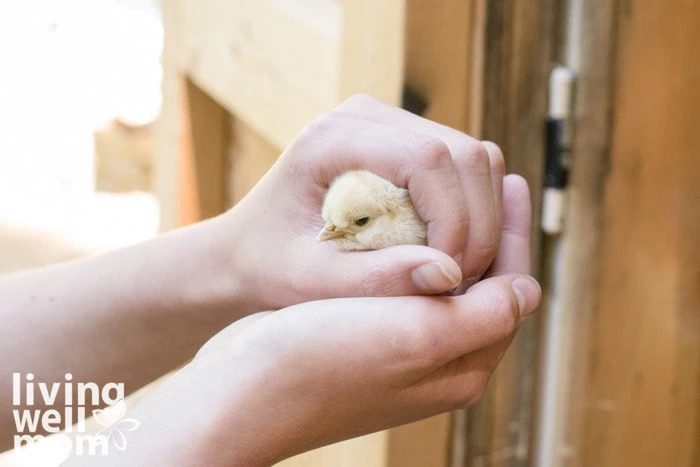
Raising chickens FAQs
If you’ve never raised chickens (and maybe even if you have), it’s common to have a few questions! Here are some I see asked a lot.
What type of chickens are good for beginners?
There are several breeds of chickens that are great for first-time owners. Rhode Island Red chickens are a great choice because they are disease-resistant, good egg layers, terrific foragers, and can withstand cold weather.
Plymouth Rock chickens are hardy, friendly, good egg layers, and pretty easy to find in stores.
Cochin chickens are docile, great for families, friendly, hardy, and great egg layers. And finally, silkies are one of the largest breeds, low-maintenance, and have very fluffy feathers!
How long does it take a chicken to lay an egg?
It takes 24 to 26 hours for a hen to produce and lay a single egg. After she lays an egg, it only takes 15 to 30 minutes for the process to begin again, so you can hope for a fresh egg daily from your hens (well, most days of the week).
How many eggs do chickens typically lay?
Different breeds have different egg-laying abilities. Generally, good layers produce about 250 eggs a year (not quite one each day) for 2-3 years. A few hybrid breeds (such as Rhode Island Reds) may lay up to 300 eggs per year, while others (ex: Buff Orpington) lay about 180 eggs in a year.
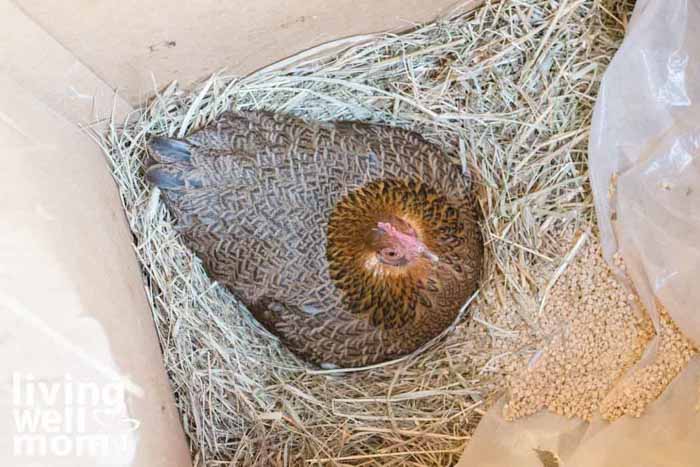
Are chickens easy to raise?
Anyone raising chickens will need to provide feed and water and clean the coop regularly so they don’t smell. That said, chickens are fairly easy to care for and aren’t much more work than other household pets would be.
If you’ve never raised chickens before but have been wanting to get your first chicks, I hope you’ll give it a try. Having chickens has been a great experience for our family!
